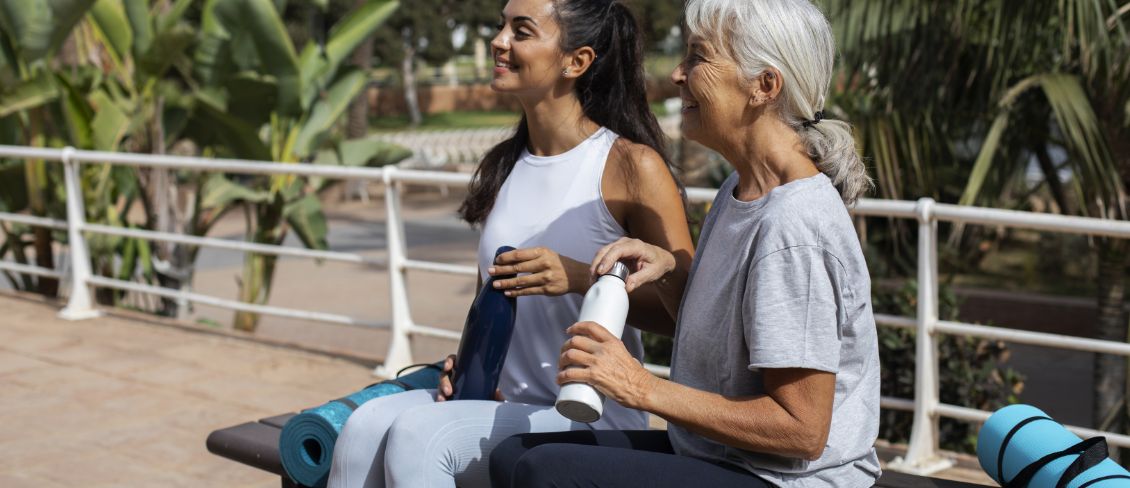Exercise
How to stay active every day
Your treatment team will usually show you the first exercises that you can perform.
The following exercises will help you get started, however, you should discuss all exercises with your treatment team before beginning training.
Abdominal muscle training
The abdominal muscles are important for supporting the body. Together with the back muscles, they stabilise you and are involved in almost every movement that you make.
Exercise 1: Isometric tension
Isometric exercises do not involve any movement. Just holding a position in place for some time can strengthen your muscles. Lie on your back with your legs bent and raise your pelvis. Pull your tummy in and press your lower back, the lumbar spine, into the support. There should be no space between the lumbar spine and the support. Keep the spine pressed to the floor. Your abdomen will become tense by holding this position. Hold the tension for 20 seconds and repeat ten times.
Exercise 2: Getting out of bed
It is important to avoid stretching the scar after recent surgery. Therefore, when getting out of bed, you should get up from a lying position to a sitting position in a certain way. Lie on your back and bend your legs. Then turn to one side. While doing this, support your scar by applying light pressure with the hand that is furthest from the bed during the rotation. With the elbow you are lying on, push yourself up from the bed into a sitting position and at the same time push both legs out of the bed. Continue to stabilise the wound with the other hand. Finally, place both feet firmly on the floor.
Exercise 3: Stabilising the upper body
Sit upright. Both feet are on the floor. Your knees should be above your feet. Tilt your straight upper body forward, remain in this position for a few seconds and then return to the starting position. Repeat this exercise slowly ten times. Make sure that your back remains straight at all times.
Ask your doctor for a prescription for a physiotherapist. Your physiotherapy team can show you other exercises that will help.
Author: Susanne Schwengler, B.Sc | Reviewer: Dr. Christian Keinki
Sources:
- Abdominal Exercises to Help You Get Back Into Shape After Surgery. (2022, July 9). Verywell Health. https://www.verywellhealth.com/strengthening-abdominal-muscles-after-surgery-1943056
- McMillan, A. (2022, January 13). 7 Abdominal Surgery Preparation and Recovery Tips. Evansville Surgical Associates. https://www.evansvillesurgical.com/7-abdominal-surgery-preparation-and-recovery-tips/
- Achinger, R & Steenebrügge, A (2002): Kinästhetik in der Pflege: Projekt Präoperative Anleitung. In: Pflegezeitschrift 10/2002. S. 705-708, abgerufen am 10.12.2020 von http://www.kinaesthetics.de/fachartikel/Pr%C3%A4mobilisation%20S.705_708_Achinger1.pd
- 6 Post-Operative Abdominal Rehabilitation Exercises | Performance Health. (2020). Performance Health. https://www.performancehealth.com/articles/6-post-operative-abdominal-rehabilitation-exercises


